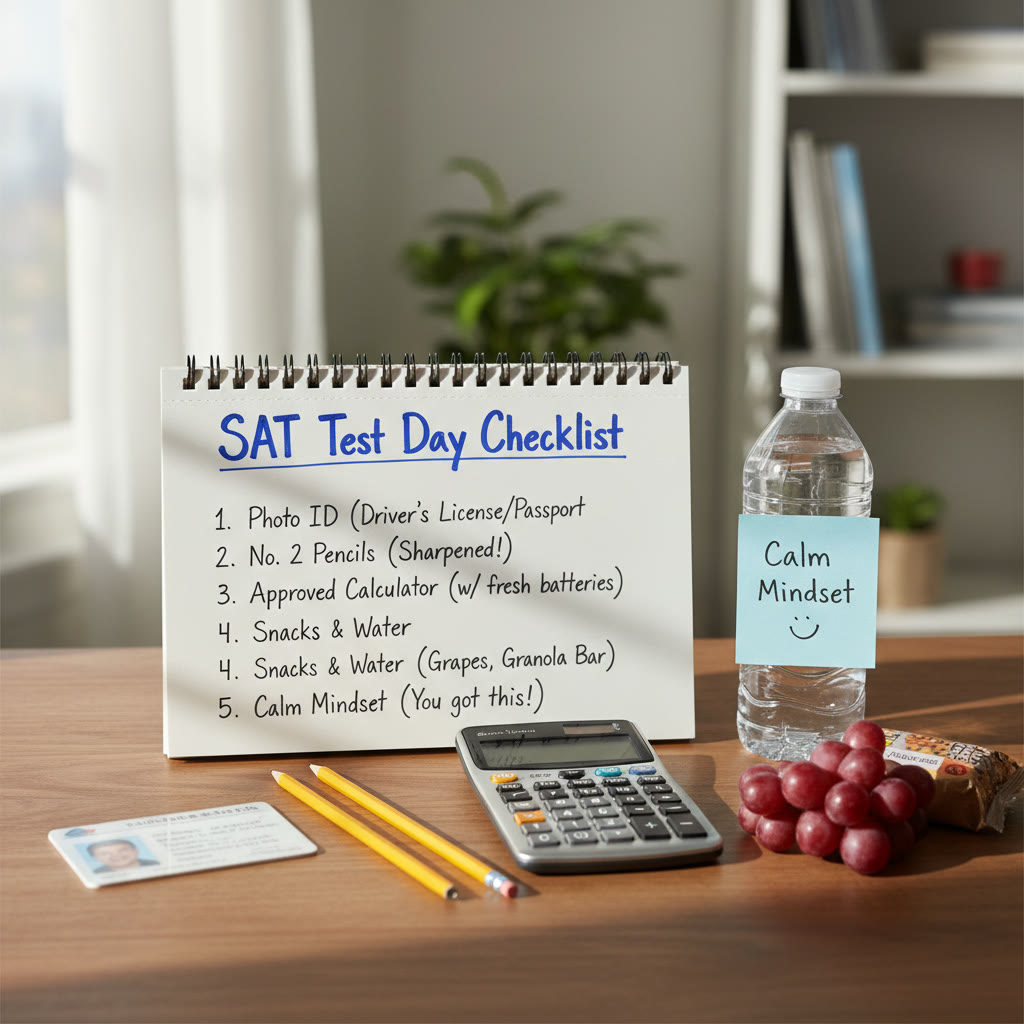Introduction: You Can Do Both — and Do Them Well
Balancing a part-time job and SAT prep is one of those rites of passage many high school students face. You’re learning time management the hard way, earning money, building responsibility — and trying to boost a test score that can shape college options. It’s a tall order, but it’s absolutely doable with a realistic plan, a few practical habits, and some gentle self-compassion.
This guide is written for the student who is clocking shifts, handing in assignments, and still determined to improve their SAT score. It’s practical, friendly, and full of examples you can adapt to your own life — including a sample weekly schedule, study strategies, and realistic expectations. Along the way I’ll mention how Sparkl’s personalized tutoring (like 1-on-1 guidance, tailored study plans, expert tutors, and AI-driven insights) can fit naturally into a busy routine when you want targeted help.
Start with a Clear, Realistic Goal
Before you buy a stack of prep books or cram hours into the weekend, decide what “success” looks like. A good goal is specific, measurable, and time-bound: for example, raise your Math score by 70 points in three months, or move from a 1200 to a 1350 overall by the December test. Why this matters: goals help you choose study tools, set a schedule, and track progress without burning out.
How to pick the right goal
- Take a full practice test (timed) to get your baseline. Use College Board or an official practice test.
- Decide on your target based on colleges you’re interested in, but also be realistic about time available.
- Break the target into monthly and weekly milestones (e.g., +20 points per month).
Assess Your Time: Find the Hidden Hours
When you work part-time, every minute counts. The key is to find pockets of consistent time and turn them into study opportunities. Here are the common places students overlook:
- Before school or early mornings: 20–45 focused minutes can be golden.
- Commute or downtime at work (if your job permits): use audio or flashcard apps, or review short notes.
- Evenings after shifts: prioritize quality over quantity — a single focused 45–60 minute session beats three unfocused hours.
- Weekends: dedicate a block for a full practice test or a deep review session, and smaller chunks for content review.
Example: A week in the life
Imagine you work three 5-hour shifts and have school five days a week. Instead of aiming for a continuous 15-hour study week, aim for:
- Daily micro-sessions: 25–40 minutes before school or after work for content drills.
- Two 60–90 minute sessions on weekdays for timed sections or review.
- One longer weekend block (2–4 hours) for a practice test or targeted deep work.
Design a Weekly Study Plan That Respects Your Job
Below is a sample weekly plan for a student working 15 hours per week. It balances content review, timed practice, mistakes analysis, and rest. Use it as a template and tweak it according to your shifts and energy levels.
| Day | Study Time | Focus | Why it matters |
|---|---|---|---|
| Monday | 30 minutes (evening) | Math mini-drills (algebra/fractions) | Short sessions keep skills sharp after the weekend |
| Tuesday | 40 minutes (morning commute + lunch) | Vocabulary + Reading passage practice | Builds fluency and reading stamina |
| Wednesday | 60 minutes (after school) | Grammar rules and Writing & Language practice | Targeted review improves accuracy |
| Thursday | 45 minutes (evening) | Timed Math section practice | Work on pacing and test strategies |
| Friday | 30 minutes (before shift) | Quick error review from the week | Keep mistakes from repeating |
| Saturday | 2–3 hours (block) | Full practice test or two sections + review | Simulates test conditions and builds endurance |
| Sunday | 60–90 minutes | Target weak areas (based on Saturday test) | Focused remediation is efficient |
Notes on customization
- If you have evening shifts, move focused study to mornings when you’re fresher.
- Peak energy matters more than calendar time. Schedule the hardest tasks for when you’re mentally sharp.
- Keep flexibility: if work throws extra hours at you, cut one weekday session and extend weekend study slightly.
Practice Tests: The Non-Negotiable Backbone
Practice tests are the fastest way to improve. They do three things: expose weak areas, train pacing, and reduce test anxiety. For students who work, the trick is to schedule practice tests strategically so they don’t collide with busy work weeks.
How often?
- Beginner (0–1 month studying): one practice test every 2–3 weeks.
- Intermediate (2–3 months): one practice test every 10–14 days.
- Advanced (final month before test): one test every week, with focused review sessions between tests.
Placement matters: take your full practice test on a Saturday or a day off work when you can truly simulate test day — no job interruptions.
Study Techniques That Fit a Busy Schedule
When time is limited, studying smarter beats studying longer. Here are high-return techniques that work especially well for students who also work.
Active recall and spaced repetition
- Active recall: close the book and write or say the answer from memory — then check. It’s more effective than re-reading.
- Spaced repetition: revisit tricky concepts at increasing intervals (1 day, 3 days, 7 days). Apps help, but a simple calendar works too.
Targeted practice over random drills
After each practice test, spend most of your study time on the types of questions you missed, not on topics you already master. If almost all your Reading errors come from timing, your practice should focus on pacing strategies; if Math errors are mostly algebra, focus there.
Quality 45s beats distracted three hours
If you have one focused 45-minute session after work, it will be far more productive than three unfocused hours. Turn off notifications, set a timer (Pomodoro 25/5 or single 45-minute block), and work deliberately.
Practical Tips for Students with Different Shift Types
Your approach changes if you have evening shifts, morning shifts, or inconsistent schedules. Here are tailored tips for each situation.
Evening shifts (most common)
- Use mornings for heavy lifting: math problem sets, error review, or a short practice section.
- Reserve commute time for passive study: vocabulary, grammar rules, or audio explanations.
- On work-free days, take a full practice test to avoid fatigue masking your progress.
Morning shifts
- Study in the evenings when you can concentrate — but keep sessions short if you’re tired.
- Plan a late-afternoon nap or short rest before an evening study block to preserve focus.
Inconsistent hours / weekend-heavy work
- Prioritize micro-sessions and practice questions during weekdays.
- On lighter work weekends, schedule longer practice tests and deep reviews.
- If possible, talk to your employer for a few quieter shifts as your test approaches — many managers are understanding if you explain your plans.
Routine, Rest, and Recovery
Studying while working is a marathon, not a sprint. Sleep, food, and downtime are essential: a tired brain makes more careless mistakes and learns less. Aim for consistency more than perfection.
Sleep and nutrition
- Target 7–9 hours of sleep. Even one night of poor sleep can make your Reading speed and math accuracy drop.
- Eat balanced meals and bring snacks to work to avoid energy crashes during evening study sessions.
Mental health and small wins
Celebrate small improvements — a faster pacing, fewer silly arithmetic mistakes, or a more confident essay outline. If stress builds, scale back study for a day and do low-stakes activities like vocabulary flashcards or light reading. Sustainable momentum beats chaotic intensity.
How Targeted Help Can Save You Time
When your calendar is tight, targeted help is usually more efficient than going it alone. That’s where personalized tutoring can be a huge advantage. A few 1-on-1 sessions can identify your bottlenecks and give you a compact study plan so you don’t waste time on low-impact work.
For example, Sparkl’s personalized tutoring offers one-on-one guidance, tailored study plans, expert tutors, and AI-driven insights that can highlight the exact question types that eat your points. If you can schedule one focused tutoring session every one or two weeks, you’ll likely progress faster than studying the same hours unguided.
Test-Day Strategy When Work Is in the Picture
If you work right up until the week before the SAT, test day can feel intense. Here’s how to manage your final week and the test day itself so your results reflect your preparation.
Final week checklist
- Reduce study volume three days before the test; do light review and a final timed section the day before.
- Confirm logistics: test center, ID, arrival time, and allowed materials (calculator policy, snacks).
- Sleep early for three nights in a row if possible — avoid all-nighters.
Test-day morning
- Eat a balanced breakfast with protein and complex carbs, bring a water bottle and easy-to-eat snack for the break.
- Arrive early and do a brief warm-up: one quick math problem set and a short, light Reading passage to get the brain in test mode.
- Use pacing strategies you practiced: mark the passage, do easier questions first, and keep an eye on the clock.
Common Pitfalls and How to Avoid Them
- Trying to cram too many hours and burning out. Solution: prioritize short, focused sessions and consistent weekly progress.
- Studying everything surface-level. Solution: focus on weaknesses and use practice test feedback to guide study topics.
- Ignoring sleep and nutrition. Solution: treat sleep as study time — it’s when consolidation happens.
- Not asking for help. Solution: a tutor or a coach can shorten your learning curve and give a targeted plan.
Real-World Example: Jenna’s 10-Week Plan
Jenna works 12–15 hours a week as a barista, attends school, and wants to raise her SAT score by 90 points in 10 weeks. Here’s how she did it:
- Week 1: Baseline practice test, set a 90-point goal, made a weekly plan with two focused weekday sessions (40–60 minutes) and one weekend practice test.
- Weeks 2–4: Focus on content gaps; Jenna used active recall flashcards for grammar and targeted algebra drills. She worked with a tutor for one session per week to create a tailored plan — deepening her weak areas.
- Weeks 5–7: Increased practice-test frequency to one every 10–14 days. Jenna analyzed each test’s mistakes, and her average timing improved with pacing drills.
- Weeks 8–9: Weekly practice tests, intense error review, and simulated test mornings to perfect routine.
- Week 10: Taper week — light review, sleep, and confidence-building. Test day: calm, prepared, and rested.
Result: Jenna raised her score by 95 points. The combination of consistent micro-sessions, targeted work, a weekly tutor check-in, and smart practice tests made the difference.
Tools and Resources that Respect Your Time
Choose tools that fit short study sessions and provide high-value feedback: timed practice sections, question banks with explanations, spaced repetition flashcards, and tutors who provide focused coaching. If you opt for tutoring, prioritize services that offer tailored study plans and data-driven insights so each minute counts.


Closing: Small, Steady Wins
Working part-time while preparing for the SAT is challenging, but it teaches skills employers and colleges value: time management, resilience, and the ability to prioritize. The most important rule is to build a study routine that fits your life and energy patterns, not one that competes with them.
Keep your goals realistic, use practice tests as a compass, invest in high-impact study techniques, and consider targeted help when you need to accelerate. A little planning and a lot of consistency will get you there — and you don’t have to choose between earning and learning. If you want efficient, personalized guidance, options like Sparkl’s 1-on-1 tutoring and AI-driven insights can make the path shorter and less stressful.
Now: pick a baseline practice test date, block a weekly weekend test on your calendar, and commit to three focused study slots next week. You’ve already got the grit. With the right plan, the numbers will follow.











No Comments
Leave a comment Cancel